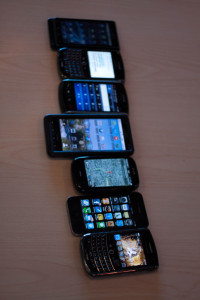 “Going mobile” is a buzz phrase that has oversaturated consumers and businesses alike, especially with the recent beginning-of-the-year flurry of articles reporting on this year’s marketing trends.
“Going mobile” is a buzz phrase that has oversaturated consumers and businesses alike, especially with the recent beginning-of-the-year flurry of articles reporting on this year’s marketing trends.
But what exactly does “going mobile” mean? In 2002, it meant using your Blackberry to send BBM’s and do some limited, albeit frustrating, Web browsing. In 2007, going mobile meant using your first-generation iPhone to browse Web 2.0 applications.
As 2012 came to a close, going mobile meant that the United States had 116 million smartphone users, and “the number of mobile-connected devices globally will exceed the number of people,” according to the digital marketing firm eMarketer. In other words, it meant that businesses couldn’t afford to not be smartphone-accessible.
In 2013, the definition of “going mobile” is bound to change. Here’s a look at three ways 2013 will redefine the smartphone experience.
“Happy App-ing”
They’re ubiquitous: “There’s an app for that.” In 2012, businesses were tasked with making their websites mobile-friendly. This year, look for big businesses to develop their own apps. By offering free content, such as news, games, or coupons, businesses will look to make their app the king of their customers’ “second screen.”
PCWorld mulled whether small businesses need apps to stay competitive:
Rather than forcing the user to launch the browser and find your URL, an app is always there, front and center on the mobile desktop. Your business is constantly in mind, whether the person is using the app or not… A ComScore study recently confirmed that 82 percent of ‘mobile media minutes’ are spent with apps instead of with the browser.
Even small businesses can get in on the app wave, without spending a large chunk of change to hire a developer. Businesses that encourage “checking in” on FourSquare or Facebook in exchange for a small percentage off a customer’s purchase put themselves forward as being tech-savvy, generous, and popular.
If you have a little more room in your budget, consider creating a do-it-yourself app through a company such as TheAppBuilder.
Noah Elkin, analyst with eMarketer, told The New York Times: “It’s getting to the point where apps are similar to search. If you don’t get any results for a brand, that brand doesn’t exist.”
Getting Info On the Go
Mobile devices have always been a great resource for directions or finding a restaurant that’s open late. But now the idea of “info on the go” is also starting to mean doing in-depth research away from your desk. As phones’ visual technologies improve, more people are using them as a research tool. A Pew study found that in 2012, the number of people using their phone to access library websites and databases has been steadily increasing.
In addition to doing research for school or work, mobile users are increasingly using their devices as a way of obtaining medical advice and information.
As PMLiVE reported:
A US study found that patients and the public are increasingly turning to their mobile phones to find health information. According to the Pew Internet and American Life Project’s Mobile Health 2012 report, nearly a third of mobile phone owners (31 per cent) have used their phone to look for health information, up from 17 per cent in 2010.
Whether it’s researching symptoms of determining if this is the year you really will get that flu shot, consumers are depending on their mobile devices for medical information at a rate that will impact how the medical and pharmaceutical industries promote themselves. Already, the United Kingdom has developed the “NHS Direct” app that provides advice and services to users. One million people used the app within the first six months of its release.
Creating Stories
Since most of our lives happen without laptop or tablet in hand, our phones have become our address book, planner, diary, and camera — all in one. The popularity of social media has created a culture where what you document for friends becomes the narration of your life. For better or worse, for many consumers, if it’s not “Facebook official,” it may as well not have happened. So, as has been the case for the past few years, social media will still rank at the top of mobile trends.
Big businesses, such as Nike, have jumped on the mobile story bandwagon.
Dean Crutchfield, with Forbes, notes:
Pervasive connectivity with social networks like Twitter and Pheed has created lightning fast word-of-mouth and emergent behavior. To tap increased connectivity, major brands are looking to spur the water-cooler effect, creating universal back channels similar to Nike’s World Cup. ‘Write The Future’ campaign. Evidence that brands can become a social object in time that people can swarm around.
So while “going mobile” has signified a lot of different things over the years, 2013 is sure to lend the term some innovative meanings for both consumers and businesses.